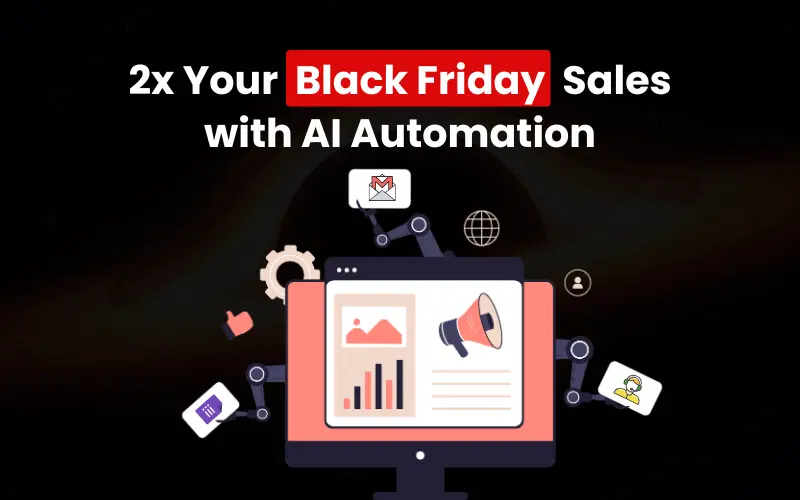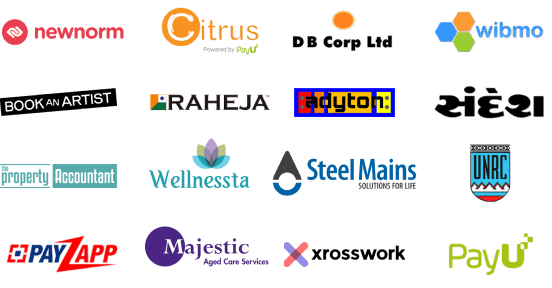AI for process automation is changing the game for businesses by taking over routine tasks in finance, human resources (HR), and sales. If you're a CTO, product manager, or agency considering automation tools, this article lays out practical examples and step-by-step advice to guide your choices.
We'll dig into how AI automation in HR, finance, and sales is not just possible but practical with today's technology. Plus, you'll see why process mapping matters for successful automation.
Understanding AI for Process Automation
What is AI for Process Automation?
AI for process automation uses smart tech like machine learning and robotic process automation (RPA) to handle everyday chores. Unlike old-school automation that follows fixed rules, AI automation is flexible and adapts to new inputs and situations.
This means AI can manage messy data, make decisions based on what it's learned, and streamline processes over time. The result? More efficiency, fewer errors, and human resources free to work on strategic stuff.
Why Process Mapping is Critical
Before jumping into AI automation, you need a handle on your current workflows. Process mapping lays out every step in a business process, pinpointing pain points or manual interferences. It tells you which tasks are ripe for automation and how this fits into larger processes.
Take finance, for instance—process mapping might show repetitive invoice approvals sucking up manual effort. In HR, it might highlight tedious onboarding tasks. For sales teams, mapping could reveal the lead qualification and follow-up routines.
Having a clear map helps avoid automating tasks that aren't ready, ensuring your entire workflow—not just bits and pieces—is optimized.
AI Automation in Finance
Use Cases and Real-World Examples
Finance teams deal with a lot of repetitive, compliance-heavy tasks that AI automation can tackle:
- Invoice Processing: AI systems use OCR to pull data from invoices, checking it against purchase orders. This cuts down manual errors and speeds things up.
- Expense Management: AI tools sort expenses, flag oddities, and ensure rules are followed without manual intervention.
- Fraud Detection: AI analyzes transaction patterns, quickly spotting and alerting to possible fraud.
- Financial Reporting: With minimal human input, data from multiple systems can be automatically consolidated to generate timely reports.
Case Study: A global bank used AI to slash its invoice processing time by 70%. By connecting AI to existing accounting software, they automated data extraction and approval workflows, all while meeting financial regulations.
Best Practices for Finance Automation
When rolling out AI automation in finance, focus on security and compliance with standards like SOX, GDPR, or PCI-DSS. Pick platforms offering audit trails and data encryption.
Sync it with existing financial systems for accurate data and use process mapping to outline the automation journey, starting with simple tasks before moving to bigger challenges.
Intelligent Automation in HR
Key Use Cases
HR processes involve a lot of paperwork and recurring tasks that impact employee experience and efficiency. Intelligent automation can change areas like:
- Recruitment: AI tools can handle resume screening, interview scheduling, and even initial candidate reviews.
- Onboarding: Automation helps new hires with paperwork, training sessions, and policy acknowledgments.
- Employee Data Management: It updates records, handles benefits, and tracks attendance automatically.
- Payroll Processing: AI checks timesheets, calculates pay, and issues payments, making sure everything's compliant.
Example: A big retail chain cut employee onboarding time by half using intelligent automation. The system sent out customized task lists, gathered digital signatures, and tracked progress without manual HR work.
Ensuring Trustworthiness and Compliance
HR data is sensitive. Choose AI tools that stick to privacy regulations like HIPAA and GDPR when needed. Being transparent is vital—employees should know how their data is gathered and used.
Keep audit logs for regulatory checks and make sure AI decisions, especially in hiring, are fair and unbiased. Regularly review AI systems to ensure they meet ethical standards.
End-to-End Automation in Sales
How AI Enhances Sales Processes
Sales cycles often have many manual steps that can slow down closing deals. End-to-end automation leverages AI to tackle these hurdles by:
- Lead Scoring and Qualification: AI digs into customer data to push leads with the highest chances of conversion to the top of the list.
- Personalized Outreach: Automated systems send tailored emails or messages based on what customers do and who they are.
- Pipeline Management: AI keeps tabs on deal stages, forecasts revenue, and spots slowdowns in the sales funnel.
- Contract Generation and Approvals: Automation drafts and sends out contracts for digital signature, closing deals faster.
Industry Example: A SaaS company boosted its lead-to-customer conversion rate by 35% by using AI for comprehensive sales automation. Their tools worked with their CRM and marketing platforms, making lead nurturing easy and seamless.
Step-by-Step Guide to Implement Sales Automation
- Map Your Sales Process: Document every step from lead generation to the closing deal.
- Choose the Right AI Tools: Seek platforms that work well with CRM, email automation, and analytics.
- Automate Lead Scoring: Begin with AI-driven lead prioritization to focus your team's efforts.
- Set Up Automated Outreach: Create templates and automation rules for customer interactions.
- Implement Pipeline Analytics: Use AI to oversee deal flow and forecast outcomes.
- Continuously Improve: Regularly review AI results and adjust workflows to enhance sales speed and conversions.
Choosing the Right AI Platform: Factors for CTOs, Product Managers, and Agencies
Key Considerations
When choosing AI for process automation, consider these factors:
- Integration: The system should connect with your existing ERP, CRM, HRMS, and other platforms.
- Scalability: Can the solution grow with your business’s scale and complexity?
- Security & Compliance: Confirm it meets data protection and regulatory norms.
- User Experience: Intuitive interfaces and clear process diagrams (like process mapping) make adoption easier.
- Customization and Flexibility: Choose platforms that support tailored workflows and end-to-end automation.
- Support & Training: Check the quality of vendor support, training, and resources.
Real-World Insight
From my experience consulting for businesses, the best AI automation rollouts started small: pilot projects in finance or HR, collecting data, and scaling with ongoing feedback. Partnering with vendors was key—actively working together to tailor solutions led to better results.
Final Thoughts and Next Steps
AI for process automation is essential in today's business operations, especially in finance, HR, and sales. Using intelligent tools crafted to fit your workflows and guided by process mapping ensures effective end-to-end automation that truly adds value.
If you're a CTO, product manager, or agency, start by mapping your key processes, weighing platforms against integration and security needs, and testing focused use cases. This careful approach lowers risk and builds a strong base for automation success.
Remember to keep transparency, data privacy, and fairness upfront when implementing AI-driven systems. This approach reassures users, customers, and regulators alike.
Ready to explore AI for process automation? Reach out for a demo or chat to see how we can help you achieve smooth, secure automation.






